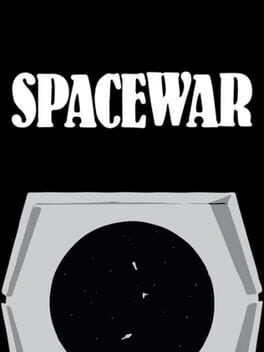

Spacewar! is one of the earliest digital computer video games. It is a two-player game, with each player taking control of a starship and attempting to destroy the other. A star in the center of the screen pulls on both ships and requires maneuvering to avoid falling into it. In 1971 it was unofficially ported into a coin-operated PDP-11 machine and renamed Galaxy Game. As an arcade machine it was installed at the Tresidder Union at Stanford University in September, 1971, two months before the official release of Computer Space, the first mass-produced video game. Only one unit was built initially, although the game later included several consoles allowing users to play against each other.
Reviews View More
One of the earliest video games, I like it mainly because of my fascination derived from what I read and watched regarding its development. Honestly, considering the year of its release I cannot help but feel a deep sense of wonder also on the gameplay side.
On one hand, it's just a game where two players pilot two ships that can be easily destroyed by a single well aimed shot (or colliding with the celestial body in the center of the screen). Well, I don't give a shit.
Being a big fan of Sci-Fi novels, Steve Russell decided that the PDP-1 would be the perfect machine to make a combination of a Sci-Fi B-movie and a $120000 toy in which two people could face off in an lethal space duel.
Spacewar! was a revolutionary game in many ways, starting from the simulation of a gravitational field that constantly attracts the two players towards the center and that forces you to plan and adopt strategies in anticipation of the actions that the opponent will implement because of gravity as an uncontrollable external variable. Simple yet wonderful the star map that serves as a background (made by Peter Samson, who wrote a program based on real star charts - Expensive Planetarium) and whose stars serve as spacemarks for the player; ingenious the implementation of certain mechanics, such as the wraparound, a limited amount of fuel and ammos (31 in total) or the provision of a cooldown system (so that players could not abuse too much of their weapons).
I want to pay particular attention to the hyperspace mechanic, which allows a player in trouble to avoid an enemy assault by rematerializing in a random point on the screen (yes, there's a chance that you could materialize on the celestial body): interesting also the fact that sometimes it may not activate at all and that it is better not to abuse it since an excessive use increases the probability that your ship will self-destruct. Fascinating that they were able to create an animation that mimicked a spatiotemporal distortion, so that when the ship jumped it left behind what was called a Minskytron signature (in reference to Marvin Minsky's Three Position Display).
In addition, this is also the first game for which a gamepad (albeit rudimentary, since it was more like a wooden control box) had been created.
The icing on the cake is the fact that the game was what we would now call open source: It was never patented since Russell and colleagues wanted to leave it up to anyone to edit or rewrite It as they saw fit.
On one hand, it's just a game where two players pilot two ships that can be easily destroyed by a single well aimed shot (or colliding with the celestial body in the center of the screen). Well, I don't give a shit.
Being a big fan of Sci-Fi novels, Steve Russell decided that the PDP-1 would be the perfect machine to make a combination of a Sci-Fi B-movie and a $120000 toy in which two people could face off in an lethal space duel.
Spacewar! was a revolutionary game in many ways, starting from the simulation of a gravitational field that constantly attracts the two players towards the center and that forces you to plan and adopt strategies in anticipation of the actions that the opponent will implement because of gravity as an uncontrollable external variable. Simple yet wonderful the star map that serves as a background (made by Peter Samson, who wrote a program based on real star charts - Expensive Planetarium) and whose stars serve as spacemarks for the player; ingenious the implementation of certain mechanics, such as the wraparound, a limited amount of fuel and ammos (31 in total) or the provision of a cooldown system (so that players could not abuse too much of their weapons).
I want to pay particular attention to the hyperspace mechanic, which allows a player in trouble to avoid an enemy assault by rematerializing in a random point on the screen (yes, there's a chance that you could materialize on the celestial body): interesting also the fact that sometimes it may not activate at all and that it is better not to abuse it since an excessive use increases the probability that your ship will self-destruct. Fascinating that they were able to create an animation that mimicked a spatiotemporal distortion, so that when the ship jumped it left behind what was called a Minskytron signature (in reference to Marvin Minsky's Three Position Display).
In addition, this is also the first game for which a gamepad (albeit rudimentary, since it was more like a wooden control box) had been created.
The icing on the cake is the fact that the game was what we would now call open source: It was never patented since Russell and colleagues wanted to leave it up to anyone to edit or rewrite It as they saw fit.
